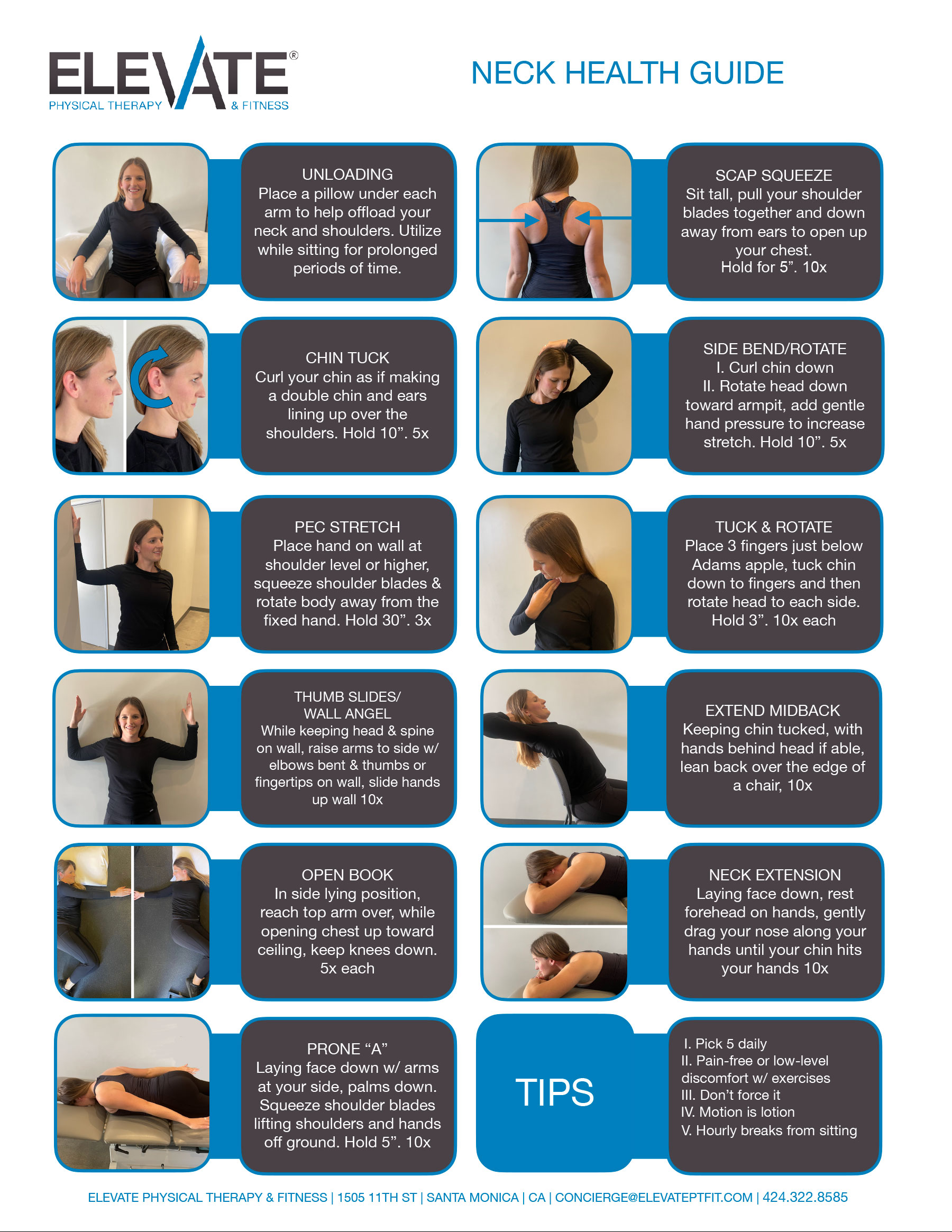
Cervical pain, or neck pain, can be a significant hindrance to daily life, but specific exercises can help alleviate this discomfort effectively from the comfort of home. Gentle stretching and strengthening exercises can improve flexibility, reduce tension, and strengthen the muscles that support the neck and upper back. Here are the top 10 exercises for cervical pain relief, each designed to be easy to perform at home.
1. Chin Tucks
- How to Do It: Sit or stand with your shoulders relaxed. Gently pull your head back so your ears align with your shoulders, creating a “double chin.” Hold for 5 seconds, then release.
- Benefits: Strengthens the neck muscles and promotes good posture.
- Reps: 10 times, twice daily.
2. Neck Stretch
- How to Do It: Sit up straight. Gently tilt your head to the right, bringing your ear towards your shoulder. Hold for 15-30 seconds, then switch to the left side.
- Benefits: Relieves tension in the sides of the neck and improves flexibility.
- Reps: 3 times on each side.
3. Shoulder Rolls
- How to Do It: Sit or stand with your arms at your sides. Roll your shoulders forward in a circular motion, then reverse direction.
- Benefits: Relaxes neck muscles and relieves upper back tension.
- Reps: 10 rolls forward, 10 rolls backward.
4. Neck Rotation
- How to Do It: Sit or stand tall. Slowly turn your head to the right, holding for 5-10 seconds, then rotate to the left.
- Benefits: Increases neck range of motion and reduces stiffness.
- Reps: 5 rotations on each side.
5. Levator Scapulae Stretch
- How to Do It: Sit with good posture. Turn your head to the right, looking toward your armpit. Gently pull your head downwards with your right hand, holding for 15-30 seconds.
- Benefits: Stretches the levator scapulae muscle, often a source of neck pain.
- Reps: 3 times per side.
6. Seated Neck Extension
- How to Do It: Sit with a straight back and gently tilt your head back as if looking up at the ceiling. Hold for 5 seconds, then return to neutral.
- Benefits: Strengthens the neck and reduces tension in the cervical spine.
- Reps: 10 times, twice daily.
7. Upper Trapezius Stretch
- How to Do It: Sit or stand tall. Place your right hand on the left side of your head, gently pulling it towards your right shoulder. Hold for 15-30 seconds.
- Benefits: Reduces stiffness in the upper trapezius muscles, which commonly contribute to neck pain.
- Reps: 3 times per side.
8. Neck Retraction (Against Wall)
- How to Do It: Stand with your back against a wall. Tuck your chin and gently press the back of your head into the wall, holding for 5 seconds.
- Benefits: Improves neck alignment and strengthens neck muscles for better posture.
- Reps: 10 times, twice daily.
9. Shoulder Blade Squeeze
- How to Do It: Sit or stand with your arms at your sides. Squeeze your shoulder blades together and hold for 5 seconds before releasing.
- Benefits: Strengthens the upper back muscles, helping relieve neck strain.
- Reps: 10 times, twice daily.
10. Cat-Cow Stretch
- How to Do It: Start on your hands and knees. Arch your back, lifting your head for the “cow” position, then round your back, tucking your head for the “cat” position. Move slowly between these two.
- Benefits: Increases flexibility in the spine and reduces tension in the neck and back.
- Reps: 10 times.
Tips for Safe and Effective Practice
- Warm Up First: Gentle movements like shoulder rolls or light stretching can warm up the muscles before beginning.
- Breathe Steadily: Breathing deeply during each exercise helps reduce tension.
- Don’t Push Through Pain: If you feel sharp pain during any movement, stop immediately to avoid injury.
- Stay Consistent: Regular practice is key to reducing cervical pain over time.
When to Seek Medical Advice
While these exercises can alleviate mild to moderate cervical pain, consult a healthcare professional if your pain is severe, doesn’t improve with self-care, or is accompanied by symptoms like numbness, tingling, or weakness.
Incorporate these exercises into your daily routine to help alleviate and prevent cervical pain. With consistent practice, you can achieve better posture, enhanced flexibility, and significant pain relief.

